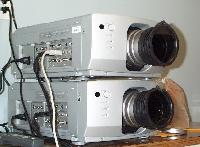
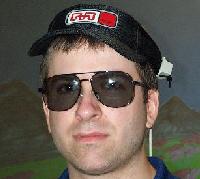
- Penguin PC running linux for the graphics
- waited for linux drivers for the dual head cards
- started with a matrox 450, now have GeForce 4
- Projectors
- Sharp projectors with lens shift - this feature makes it easier to align the 2 channels of video
- We got the last 2 on the market
- Circular polarizing filters for the projectors and for the glasses
- circular polarization means that polarization is not lost if the user tilts their head
- Screen
- 7' x 5' (2.1 x 1.5 metres) Disney black screen with aluminum frame
- The sharp projectors had a long throw distance and therefore the space where the system was installed was a limiting factor in determining the possible size of the screen
- We decided against bouncing the image of a mirror - largely because of logistics, and there can also be some tricky problems with the passive stereo which Dave will touch on later
- Fears that the aluminum screen would create noise in the tracker proved unfounded
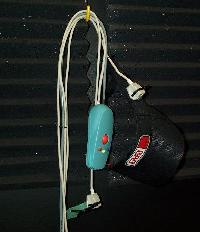
- Ascension SpacePad Tracker
- purchased because we were familiar with it and found it reliable and its relatively inexpensive.
- we built our own antenna - from a diagram supplied by Greg Dawe at EVL
- we bought 3 tracking sensors, 1 for the head, 1 for each hand
- Hand-me-down tracking PC
- running windows 98
- isa-slot for space-pad card - the card is extremely large
- Murray Consulting Wanda
- purchased because we were familiar with it, and knew it would work
- one tracking sensor is installed in the wanda
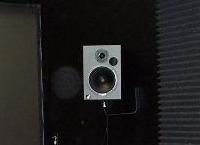
- Sound
- mackie mixer
- four speakers
- linux PC running Pd for spatialization and sound design
- black sound proofing and painted black walls for elegance
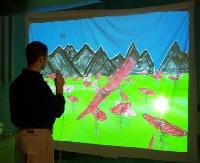
- Current Software setup
- CAVElib
- OpenGL
- Performer
- because of our own legacy software and preferences we wanted to be able to use Performer, and this was one of the major reasons for opting for the linux OS
- Pd and Bergen sound software